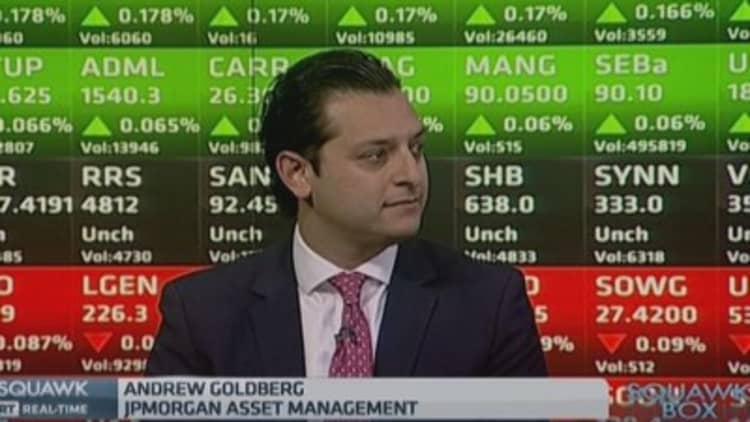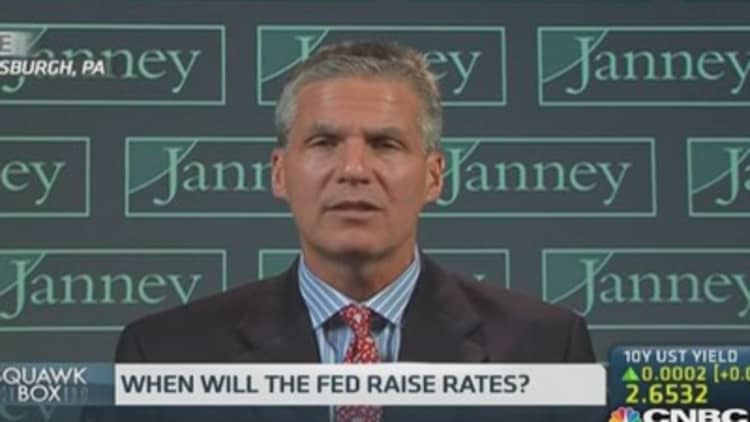Widespread expectations interest rates would stay lower for longer have spurred traders to chase "carry trades" funded by low-yielding currencies, but some analysts warn that's no longer a safe bet.
The Federal Reserve meeting's dovish outcome last week shifted sentiment in favor of continuing the carry theme, but "we are increasingly uncomfortable with the carry complacency being bred by the current low volatility environment," Deutsche Bank said in a note Friday.
Read More Why higher rates won't hurt Asia markets
Although the Fed continued to step away from quantitative easing at its last meeting, trimming asset purchases by another $10 billion to $35 billion a month, it set a more-dovish-than-expected tone and lowered the long-term interest rate target.

That dovish tone is likely to support carry trades, or trades where investors borrow in a low-yielding currency, such as the yen and sometimes the U.S. dollar, to fund investments in higher yielding assets elsewhere. A weakening currency is central to the carry trade as since it means that investors have less to repay when they cash out of the trade.
Carry trades are also getting a fillip from low volatility in financial markets, with the CBOE Volatility Index, or VIX, hovering at pre-financial crisis lows, suggesting a level of complacency over risk.
Read More Commentary: What history tells us about the carry trade: El-Erian
Deutsche Bank expects markets will become more nervous in the third quarter as the Fed's policy becomes more likely to shift.
"[We] see it prudent now more than ever to be selective and deliberate," it said.
Deutsche Bank isn't alone in its concern.
"For much of 2014 thus far, markets have been dominated by a search for carry and a sense (again) that central banks will keep rates lower for longer," Richard Yetsenga, head of global markets strategy at ANZ, said in a note Tuesday. "This thematic is being overpriced."
Read More Are the dollar's carry trade days numbered?
The problem with expecting rates to remain low is that it assumes economic growth faces continued headwinds, he said.
"The problem we see, however, is that some broad, top-down measures suggest that the global economy looks more 'normal' than at almost any other time in the post-crisis period," he said.
"The clear risk in our view is for central banks to ultimately be more activist than markets are currently pricing," Yetsenga said.

He believes U.S. bond yields are likely at their bottom, and the U.S. dollar will likely continue to strengthen.
"Markets are too sanguine about the stability in short rates continuing to hold, and likely also too relaxed about how low volatility can stay."
Others also expect the Fed is likely to disrupt the "lower for longer" expectations.
"The big risk in the U.S. is that the Fed will raise rates earlier and further than generally expected," Julian Jessop, an economist at Capital Economics, said in a note Wednesday.
Read More'Hot money' ride could be getting put on ice
"There is less spare capacity, especially in the labor market, which means both wage growth and core inflation will rise more quickly," he said, adding the rate increases may begin as soon as the first quarter of next year. "By the end of 2017, U.S. rates could be back at 4 percent, pulling the dollar and bond yields higher."
Some investors are already preparing for the shift.
JPMorgan is gradually trimming its long credit market positions in its model portfolio and shifting toward more liquid risk assets, citing a worst-case scenario of higher rates causing bond-market convulsions.
Read More Emerging markets carry trade? Well, it's back
"A sudden rise in U.S. short rates could easily entice fast outflows from higher yielding bond funds," potentially spurring broad market liquidity problems, Jan Loeys, managing director at JPMorgan, said in a note last week.
To be sure, some expect a disruption of the lower-for-longer theme in favor of "normalization" of interest rates offers more opportunities for carry trades.
"The combination of a risk-on environment and a normalization scenario would argue for currency markets more driven by relative returns on assets," Herve Goulletquer, head of global markets research at Credit Agricole, said in a note Monday.
Better global economic growth prospects and rising liquidity expectations from the European Central Bank taking a more dovish stance compared with the Fed should be favorable for carry trades, he said.
—By CNBC.Com's Leslie Shaffer; Follow her on Twitter @LeslieShaffer1

